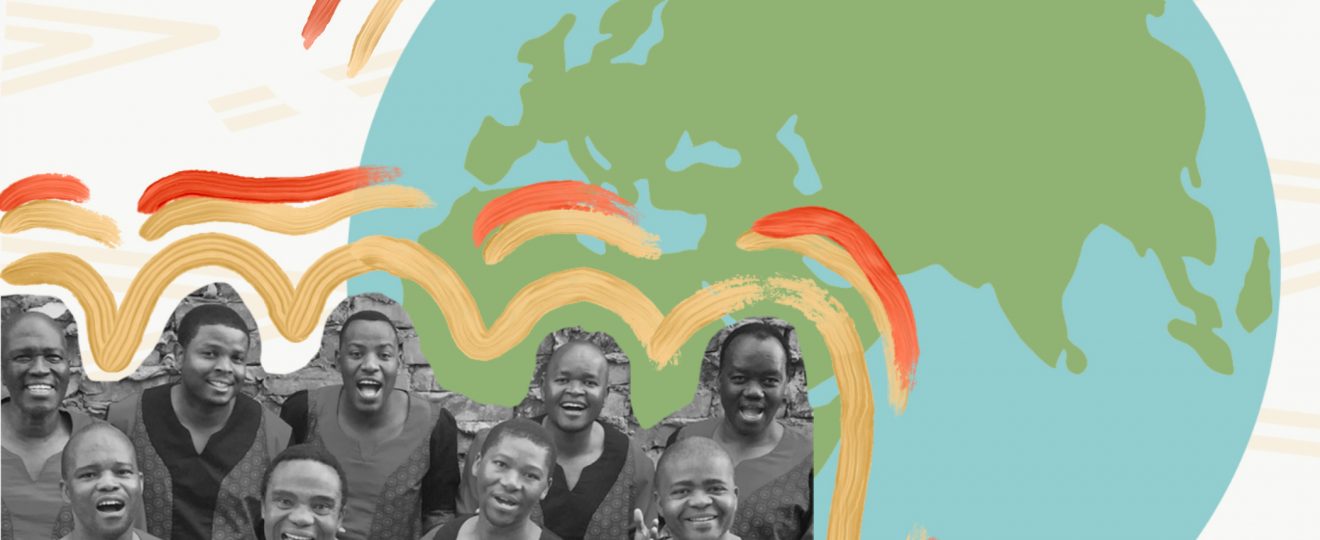“Ladysmith Black Mambazo wants to break cultural boundaries, emulating a message of peace, love, hope, and harmony.”
Nelson Mandela defined the Grammy Award-winning South African male choral ensemble, Ladysmith Black Mambazo as “South Africa’s cultural ambassadors to the world.” This acapella singing sensation was formed in the early 1960s in
Their music can be described as playful, with tenor and alto harmonies combined with vocal clicks, pops, and breathy tones and rhythms, all together creating beautiful arrangements.
The name “Ladysmith Black Mambazo” is significant to the group and their music. Joseph Shabalala, the group’s founder, chose the name for three important reasons: “Ladysmith” is the name of the farming village that Shabalala grew up in South Africa; “Black” represents the black oxen who are the strongest animals in Shabalala’s farming community; and “Mambazo,” which means “axe,” symbolizes the group’s desire to “cut down the competition.”
Shabalala founded the group in 1964, with the hope to bring a new interpretation of traditional Isicathamiya music to the table. It took a long time to put together the perfect set of singers for the group, but after Shabalala had a series of dreams in which he heard certain Isicathamiya harmonies, he knew exactly the type of music he wished to make. With that in mind, he finalized the group: four of his brothers, three of his cousins, and himself. They began performing Isicathamiya songs at local gatherings and weddings, and after gaining local success and popularity, Shabalala began entering the songs into Isicathamiya competitions.
After performing and getting their music out there, the group was eventually banned from Isicathamiya competitions because their music was deemed too good, to the point that it was becoming unfair to other performers. This prompted their move from live competition to the recording studio. The beginning of the choral group’s ambitious discography began in 1970 when they signed their very first record deal, and in 1973, when they released their first record, “Amabutho.”
After finally releasing their music to the world, in the
One of the most significant things to come from this group, that ended up having a huge impact on their careers, was their relationship with Nelson Mandela. Shortly after being freed after twenty-seven years in prison, Mandela first met the group at his birthday party in 1990. Albert Mazibuko, one of the last two remaining original members of the group, recalls meeting Mandela for the first time:
We were on stage and we sang a song and he stood up and he danced with us and he shook our hands and he said keep up the good work… your music has been great inspiration for me. After that he never wanted to do anything without Ladysmith Black Mambazo — we have been with him all over the place.
When Mandela received his Nobel Peace Prize, he requested that Ladysmith Black Mambazo attend the ceremony with him, and then again a year later for his inauguration as President of South Africa. This deep bond between these important people is one of the many beauties to come from this ensemble.
The group has been performing and creating for over sixty years, and have released over fifty albums, many of which received gold and/or platinum disc certification. Ladysmith Black Mambazo wants to break cultural boundaries, emulating a message of peace, love, hope, and harmony. Speaking of the group, Mazibuko says:
Ladysmith Black Mambazo music is about inspiration. We are encouraging people to not lose hope in anything. We try to give people the hope that there is a tomorrow, there is a better thing that is waiting for us in the future and that there is a solution for every problem in the world.
Shabalala and Mazibuko are the ensemble’s last two remaining
Their message of peace, love, and harmony, shines through even
art by: Sarah de Surville




